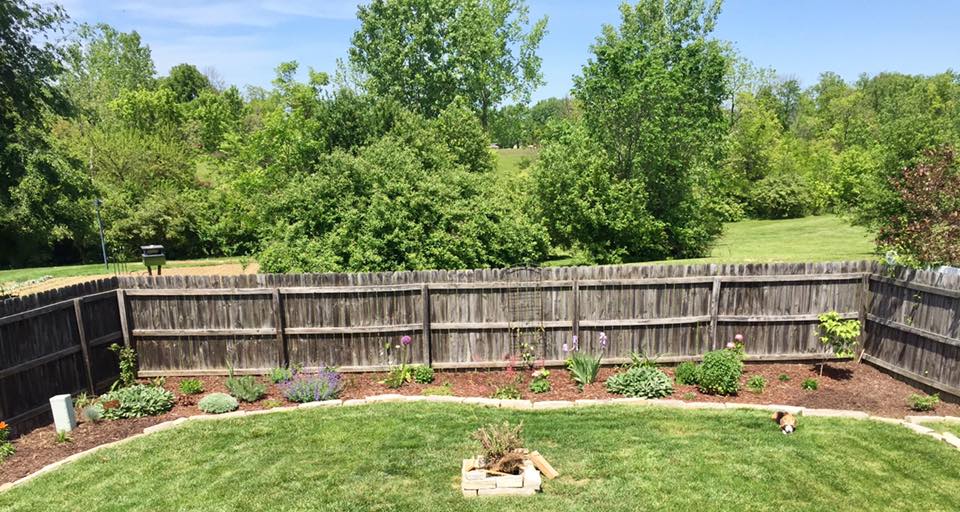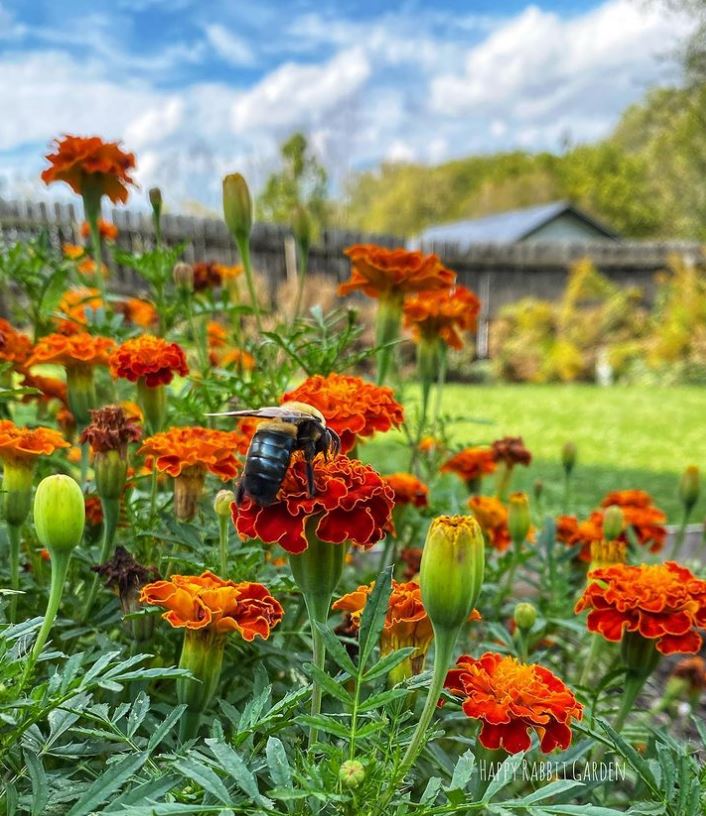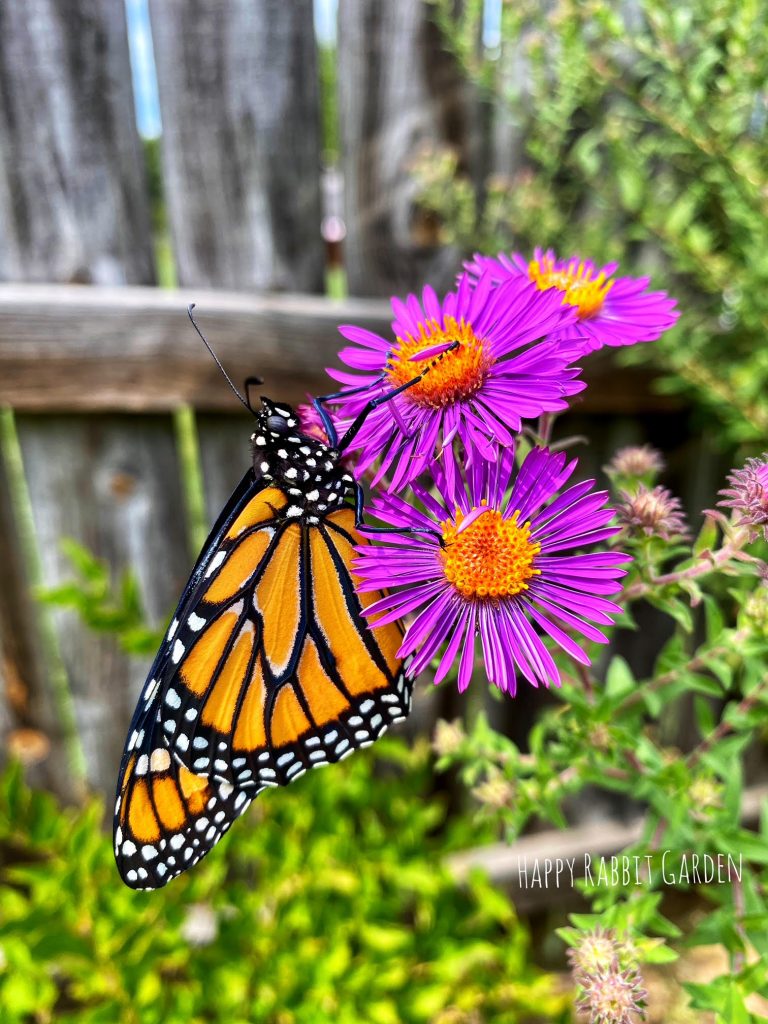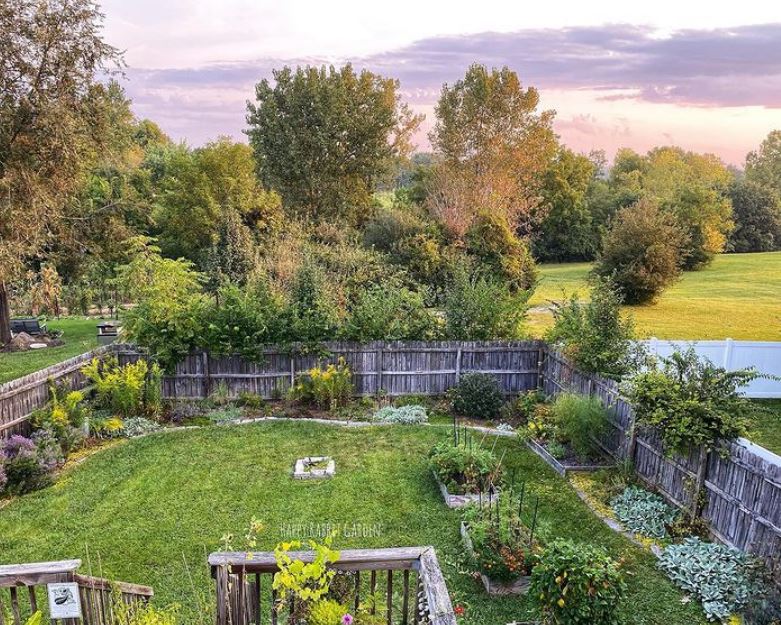Back in 2015, when the husband and I were first walking through our now house, we fell in love with the view of all the trees and open land behind the fence. We’d been living that glorious apartment-life for years, and when we toured the house late that fall, with all the trees in their full, colorful autumn glory, we knew we had found our home. I don’t even think it really occurred to me that yard, while not huge, was the prefect blank canvas with which to begin a garden.

We bought the house shortly after, and I spent that winter starting to dream. I came across a few books about what to plant, but was pretty overwhelmed with all the possibilities. I didn’t want to bite off more than we could chew, and while I’d helped my parents plant things and pull weeds all my life, I’d never been in charge of the layout of a garden.
The backyard itself was completely empty, save for some rough-looking grass and a swing set. And in the front yard, there were a few box hedges and a flowering plum tree in a little bed by the front door. I knew that I wanted to put in borders around the entire backyard fence. We dug out the grass along one side, added some compost, and I went to town, buying and planting a few things that I’d fallen in love with. My parents split a several perennials from their yard for us to add to the party (some of which have been in the family for generations), and just like that, we had our first garden.

Beyond digging and finding a loamy soil that had quite a lot of clay, I didn’t do any soil tests for further information, consider design principles, or pay any attention to native planting. In other words, I’ve learned a thing or two since that first season!
The backyard faces the south, and is mostly in full sun, all day long. The front yard gets sun in the morning, and is more shaded during the rest of the day. Over the years, I’ve moved quite a few plants around to accommodate their lighting requirements (another thing I’ve learned is rather important!).

Slowly but surely, we finished lining the backyard with beds for trees, flowers, and shrubs. We added two shade gardens for the area close to the house that stays fairly damp and shady, especially in the afternoons. Four raised beds have been built for veggies and herbs. The husband built a compost bin for kitchen scraps and yard waste. And more recently, we added a wildlife pond. In the front yard, we’ve added two beds, (one of which is a rock garden) and extended the bed that was already there.
As time has passed, I’ve learned a lot, and have really fallen in love with native plants. After learning of their importance for pollinators and wildlife, as well as how they help with flooding and runoff issues, I’ve stuffed the beds with as many as I can find. I’ve also switched to gardening entirely organically, with absolutely no pesticides on our crops or plants. Saving the wildlife that uses our garden is just too important to justify use of these chemicals. And, we haven’t needed them.

Our little garden amazes me every day of the year. So much wildlife visits, from frogs and birds, to bees and butterflies. The vegetables we grow just don’t seem to face many pest problems, as the native plants we grow draw in a lot of their natural predators. Our garden feels like a part of an ecosystem, and that means the world to me.
Since the pandemic began, I have spent more time than ever in the garden (for some reason, the size of the garden seems to have doubled during that time). It’s been a safe space to enjoy the outdoors, as well as a hopeful space. Audrey Hepburn said, “To plant a garden is to believe in tomorrow,” and I’ve really found that to be true. I feel so much more hopeful in the garden, surrounded by all the beautiful wildlife and plants. I’m grateful for my garden, and honored to be its caretaker.

